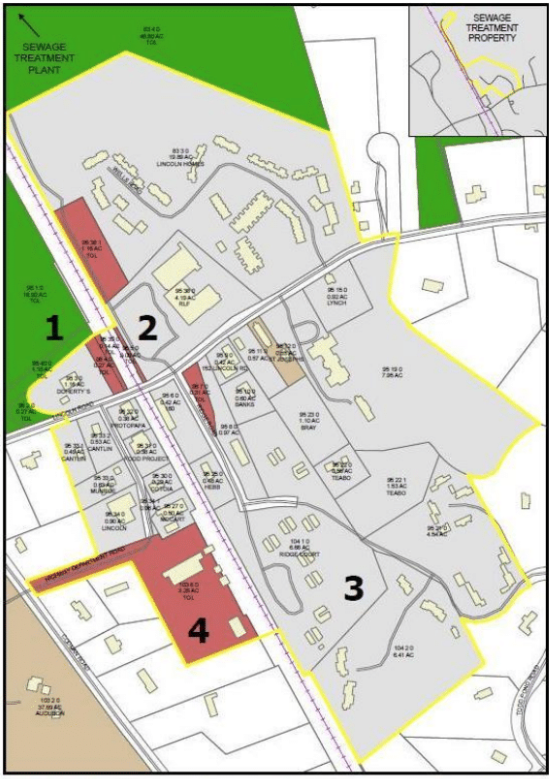School Building Committee architects proposed some master planning objectives for the Ballfield Road campus as well as five general options for locating the various aspects of the Lincoln School around that campus at a public workshop on October 3.
Before they even began presenting their thoughts, resident Steve Perlmutter summed up his feelings about the campus that are shared by many of those who rejected the 2012 school design that would have encroached on the central ball field and significantly reconfigured the north side of campus.
“I’m concerned that if we’re not very careful, we could lose much of this special place and with it, a large part of Lincoln’s soul, character, and heritage,” said Perlmutter, noting that he was speaking as a private citizen and not in his capacity as a member of the SBC. The school campus is “stunning and bucolic” and “quintessentially Lincoln,” he said. “We need to keep on asking ourselves if what you propose to do belongs to the land instead of the other way around.”
The ball field is “one for those central gems you would never get back if you developed it, agreed Sandra Farrell, a landscape architect with SMMA Architects, adding that the field and the healthy trees around it are “more or less sacrosanct)
The firm’s planning objectives for a multigenerational, multiprogram campus include developing a healthy network of trees and pathways around school buildings and between community spaces including the tennis courts and the pool. The final plan should also foster educational goals while also creating cohesion between new and old elements and demonstrating stewardship of the land, she said.
Before thinking about what structures should be renovated or replaced, SMMA principal architect Alex Pitkin encouraged residents to think about five configurations—taking into account locations, “adjacencies,” building heights, and even overlap—for four main elements (see below):
- PreK–4
- Grades 5–8
- Common areas that the public could also use outside school hours such as the auditorium, gyms, and cafeteria(s)
- Community center elements including the Council on Aging, the Parks and Recreation Department, and the Lincoln Extended-day Activities Program.
“Sometimes it’s very effective to move functions around a building, whether it’s renovated or rebuilt,” Pitkin said.
The next public workshop will focus on educational vision and will take place in two identical sessions on one day: Tuesday, Oct. 14 from 2–4 p.m. and 7–9 p.m. in the Brooks gym. For more information on the history of the project, news and upcoming events, go to lincolnsbc.org.
Click on an image to see larger version:
[Best_Wordpress_Gallery id=”57″ gal_title=”Oct 2017 campus options”]




